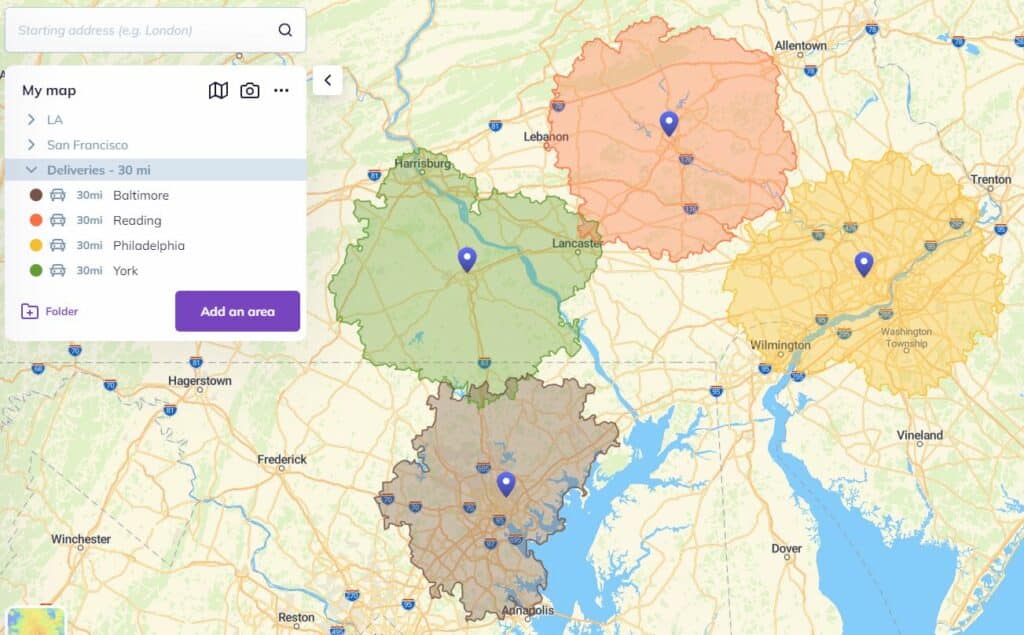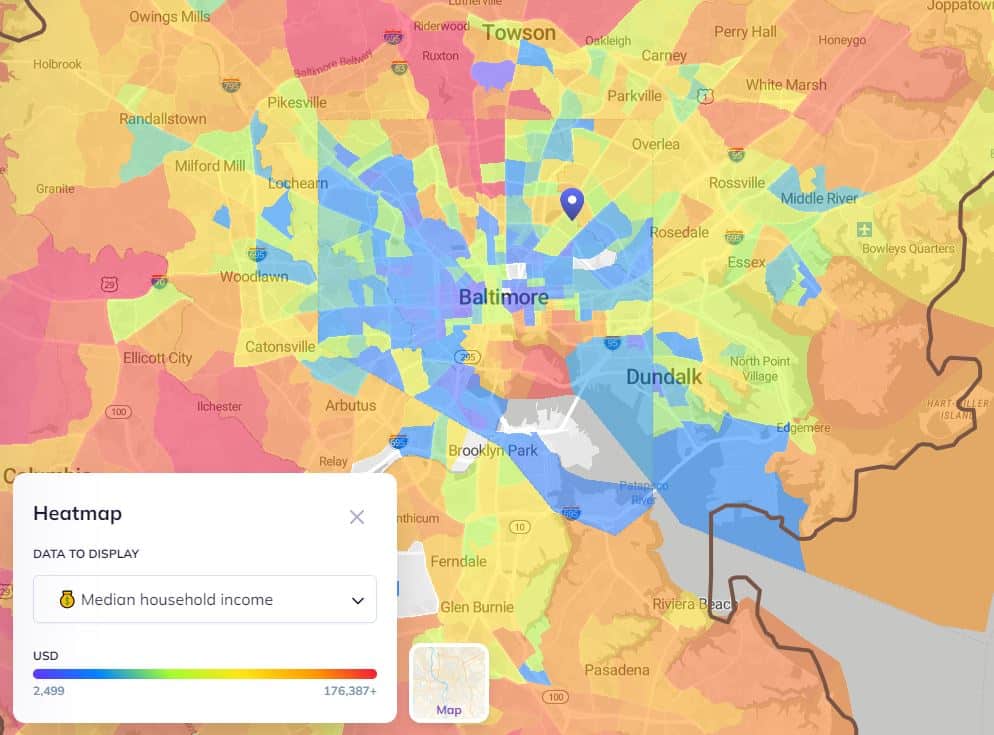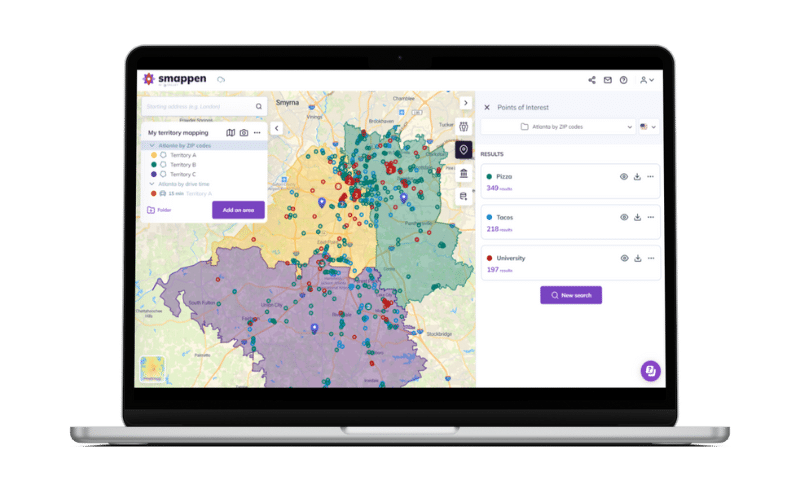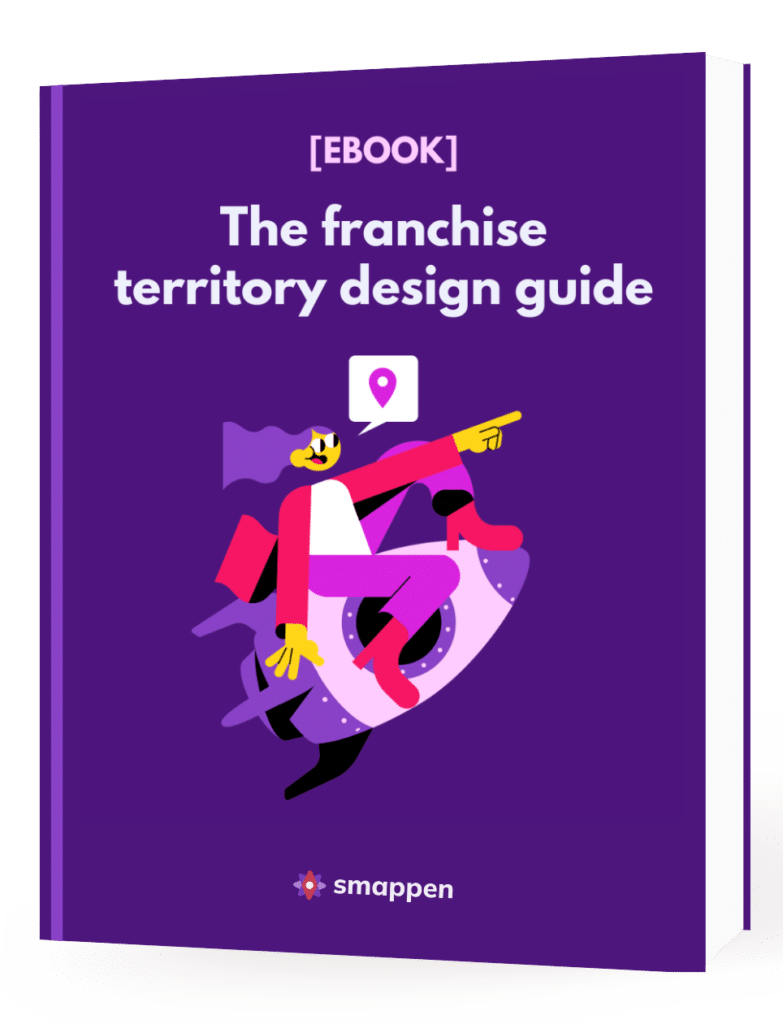What is location intelligence ?
Location intelligence or spatial intelligence is a visual representation of geospatial data on a map. It is mainly used by companies for analysis, decision-making and strategy optimization.
This arm of data science relates to location-based analytics, whereas business intelligence uses various types of insight and chart. With location data, a different type of insight analysis is possible, offering a more global view for better decision-making. Location intelligence has existed for a long time, but analysts used to use custom maps. Now, however, digital technology has been used to create several platforms known as mapping tools or geographic information systems (GISs).
How is location intelligence used?
Location intelligence is one of the most useful types of data out there for businesses, institutions, governments, and even average consumers. Here are just a few examples of how it’s used.
Site selection
Picking the right location to do business can be just as important as choosing your product’s price. A fast-food restaurant that’s far from a major intersection or highway is going to struggle to bring in customers. An asset management firm probably won’t perform well if it isn’t situated in one of its country’s big financial centers. With location intelligence, you can research the suitability of a city, a neighborhood, and even a specific intersection for your business.
Geomarketing
Any marketing initiative that relies on geographic data can be called geomarketing. That can include targeting a marketing campaign to a specific demographic within a defined area, defining your ideal customer profile, and even just visualizing marketing data on a map. That makes location intelligence a great asset for marketers.
Targeted OOH (out-of-home) marketing campaigns
OOH marketing refers to any kind of marketing that your potential customer will encounter outside of their home. That means billboards, public transit ads, careful product placement in retail stores, and more. For some of these campaigns, location intelligence is essential. After all, if you’re going to spend your budget on a billboard, you’d better put it in the best possible location.
Business intelligence
Business intelligence is a broad discipline that encompasses business analytics, data mining, visualization, and a host of other techniques to do one specific thing: help businesses make better decisions. Location intelligence falls within this umbrella, since a ton of location-based data is used in business intelligence.
These are just a few examples, and far from being the only ways you can use location intelligence.
What kind of data is used in location intelligence?
That really depends on the kind of work you’re planning to do. A business analyst, for instance, might not use the same kind of data as an urban planner working for a municipal government. Here are a few examples of the type of data that’s used in location intelligence.
- Demographic data: For a lot of industries, this kind of data is crucial. Demographic data can include population, population growth, ethnicity, population density, and more.
- Financial data: This is especially important for financial institutions and real estate companies. With location data, they can match prices, incomes, and other financial information to specific locations. That creates enriched data they can use for planning and marketing efforts.
- Personal data: Data is the currency in tech, and a lot of it comes from smartphones. For a lot of industries, location intelligence depends on that data. It includes shopping habits, GPS data, the entertainment people consume, and more.
- Infrastructure data: Whether it’s planning municipal projects or building telecommunications networks, people need to know what’s already been built in the area they’re planning to develop.
How to pick the right location intelligence tool
Each location-intelligence tool offers distinct features, making each one a little different.. Before you jump in, you have to ensure that the solution you pick is the right fit for your needs. These exact needs can vary depending on your industry, your business, and the type of data you need. Here are the boxes you need to check off before picking a location intelligence tool:
- It has the data you need: Not all location intelligence tools have the same amount of data. Some might only pull from one or two databases, giving you a limited pool to draw insights from. A tool like Smappen, on the other hand, combines POI data from Google Maps with demographic information from the U.S. Census while allowing you to upload your own data.
- It has right features: Depending on what you’ll be using your location intelligence tool for, some features may be absolutely essential whereas others might go completely unused. For example, if heat maps are the best way to represent the research you’re trying to do, you’ll want to pick a tool that offers them.
- The price makes sense: Some location intelligence tools can cost as much as $40,000 a year. If you’re running an enterprise-sized business with enterprise-sized needs — and a matching budget — then this might not be a problem. But for most businesses, a tool with a lower cost makes more sense. Smappen, for example, has a free forever plan that’ll let you quickly get started. From there, paid plans start at $79 a month.
Location intelligence in action: choosing a location for your business
Used properly, location intelligence can help you make crucial strategic decisions for keeping your business growing. Let’s see just how much data location intelligence can give you for one of the most important decisions you’ll ever make: where you set up your business.
Potential customers
Databases like the U.S. census can give you a lot of information about your potential customers, but it’s only with location intelligence that you can turn this into insights that’ll help you position your business. That’s because many location intelligence tools — like Smappen — can place U.S. census data on a map.
Competitors
If you already know what kind of businesses you’re competing with, location intelligence can give you an idea of which neighborhoods they’ve set up shop in. That can help you find the right place for your business — and the wrong ones.
Visibility
Location intelligence can include visual data about specific neighborhoods, like images and video footage. With a little bit of help from the right tool, you can scan potential locations to see how visible they are from the street — if your business is particularly dependent on foot traffic.
In-person visitors
Some location intelligence tools can give you access to foot and car traffic data, which is essential for brick-and-mortar businesses. Knowing how often potential customers pass through a neighborhood will tell you how viable a business located in that neighborhood would be.
Access
If your business caters to customers who usually go shopping in their cars — like a hardware store or a car wash — you’ll need to make sure your chosen location has plenty of parking. Location intelligence can help you find this out.
7 opportunities you can act on with location intelligence
Location intelligence is a great way to uncover hidden opportunities in strategy and logistics, but having this data is a powerful tool for marketers, too.
Opportunity #1: Finding complementary businesses (and other partners)
“Complementary business” refers to any business offering a product or service that matches these two criteria:
- It doesn’t compete with what you offer.
- It enhances your own product or service.
Building partnerships with complementary businesses is a great way to increase revenue for both parties, and they’re some of the best partners you’ll have. You probably already have an idea of which businesses fit this description, but with location intelligence, you can find and display them all on a map, which is especially useful when researching new locations or planning local marketing campaigns.
Opportunity #2: Optimizing logistics (and reducing costs)
Optimizing logistics is all about reducing the time and money it takes to get your product or service to your customer, and location intelligence is an essential part of this.
Location intelligence tools like Smappen typically provide a ton of data you can use to know your ideal customer’s behavior. By combining that data with radius maps and other visualization methods only offered by location intelligence tools, you can more effectively invest resources in distribution channels that work while figuring out why others aren’t as effective.

Opportunity #3: Fine-tuning your advertising campaigns
Advertising can get expensive, so every dollar in your budget should be spent as efficiently as possible. Unless your business serves all of its customers through an online platform, using location intelligence is crucial.
With a location intelligence tool, you can preface every advertising campaign with in-depth research about your target audience, where they live, and how they shop. And if you use a tool that provides point-of-interest data, you can compare this research with other businesses around yours — whether they’re complementary or the competition.
Opportunity #4: Spotting ideal locations for expansion
Finding the perfect place for a new location is a problem every business hopes to have. But just because expansion is a good thing doesn’t mean it’s a cakewalk. Whether you’re leasing or buying a new location, you’re looking at a huge investment, and you need to make sure it pans out.
Location intelligence can answer just about any question you’ll have about a potential new location — except maybe if there are ants in the walls. You can research local markets and even create catchment areas to see how accessible a building is.
Opportunity #5: Use demographics to find underserved customers
There are a ton of industries where finding underserved customers in a specific location is one of the best ways to grow a new business. In an industry like tech, that may mean being at the cutting edge of the latest developments and building a platform that perfectly nails a specific use case. But even industries like food delivery can find customers who are hungry for a certain service and aren’t getting it.
A location intelligence tool like Smappen gives you access to demographic data you can use to create new customer profiles and reveal these opportunities.

Opportunity #6: Outpacing the competition
Operating in a highly-competitive industry can often feel like something of an arms race. Just as you’re figuring out a new strategy, you realize some competitor is already copying it. Or maybe you’re putting the finishing touches on a new product, only to find out someone’s beaten you to the punch.
Location intelligence can be an essential part of staying ahead of the competition. Not only will it give you data you can use to improve your own business strategy, but it’s also a shortcut to analyzing a competitor’s performance. For example, you could use catchment areas and demographic data to estimate the delivery radius of a competitor — and see if you should be changing yours.
Opportunity #7: Upgrading your ideal customer profile
An ideal customer profile represents customers who bring in the most revenue — while not costing too much to acquire or keep. To build this profile, you need a ton of demographic data, which pairs nicely with location intelligence.
If your business deals primarily with local markets, you can use a location intelligence tool to research these markets and bulk up your ideal customer profile with some geographical information. For example, if you know that your ideal customer is in a certain income bracket, location intelligence can tell you which neighborhoods they frequent in your city.
Start off on the right foot: Use Smappen
Like many things, using location intelligence is a whole lot easier if you’re using the right tools. But while there are a lot of options out there, most of them are either too difficult to set up or prohibitively expensive for all but the largest businesses.
That’s where Smappen comes in.
Smappen is as easy to use as Google Maps but as powerful as the most advanced location intelligence tools on the market. You can use Smappen to pull point-of-interest data for market research, draw trade areas, and research new markets, and more.
You can get set up in minutes and start adding location intelligence to your marketing efforts, your logistics processes, and your business strategy.

Intelligent locations
With location intelligence, you can create stronger marketing campaigns, properly plan your expansion, and get to know your customers more thoroughly. When you’re using a tool like Smappen, you can give any team access to location intelligence without worrying about giving them an extensive training session. So get started for free here, and see what location intelligence can do for your business!

